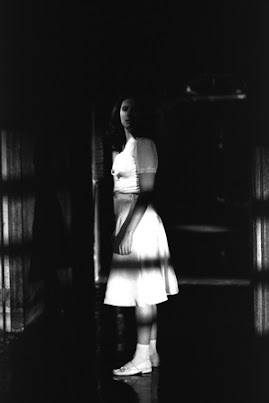Voice is ... a passageway joining our inner and outer worlds,
the vehicle whereby secrets are kept or disclosed,
and an important source of power, private and public.
The voice eludes narrow definition.
In Spanish la voz, means ‘you’. In French, la voix, can refer to ‘a path’ or ‘ the way.’ In both Spanish and French voice is feminine. In English, we hear associations in, the voice, to inherent meaning of things, not just people, as well as their authorial position and place in the world.
Theatre has long established the connection between voice and personality. The word persona, which in Latin means mask or character, is composed of the words per, meaning “through” and sonare, meaning “to sound.”
Voice Work, in the Alfred Wolfson/Roy Hart Theatre tradition, is also referred to as "the singing process,” is a practice wherein one listens to internalized sound-image-sensations, embodying before and while expressing them, often without knowing what they will become when finally sounded/heard/developed—when the voice is as yet unknown, undefined and grows gradually by means of its own recognition.
This process demands patience with the non-reproductive— that is, the “Nothing Moment” when “nothing seems to be happening” and controlled creative intention is voided. It is here that the work of art, or artistic work, takes on a life of its own and the struggle between, on the one hand, pre-formed, ‘pure’ vocal sound and on the other, recognizable melody and speech, becomes paramount. In this "singing process" the mask falls apart as it reconstitutes itself in an endless dance of the struggle for signification — a kind of mining for meaning.
Working vocally with as yet unformed and broken sounds is an invitation to the audible process of transformation. It is here too, that we can begin to perceive that the voice stems from, and is inextricably linked to, as yet inaudible processes that extend past and lie beyond interiority, onto external and barely perceptible presences that resonate in the existing landscape. These presences, call them spirits, when taken in, as in/spiration, have the potential to take possession (instead of being possessed by) the individual as part of that landscape, and must be sounded out.
Enrique Pardo, director of Pantheatre, heir to the Wolfson/Hart tradition, a mentor, collaborator and dear friend, referred to “the fabulous war between words and the voice” at Giving Voice, Centre for Performance Research at the University of Aberystwyth, Whales, in 2005 in his introduction to a series of Myth and Theatre Festivals being planned at the Roy Hart International Centre in France on Myths of the Voice. His use of the analogy of war speaks to the discomfort that working with voice and text, in this way inevitably entails, along with and likely because of the resistances that ensue. These resistances, for Enrique, and for me, are part of the work of figuring out, of figuration, which must be reabsorbed into the design process — "what do I/does it look like?" and lies at the heart of image making for design driven performance and scenography.
Voice work and Voice Performance, is not unlike a migratory excavation into the disturbances that define the liminal and border(line)— there where the fables of the “fabulous war” play out, as a sifting and shifting through (un)recognizable and re(con)figured soundscapes. As Enrique Pardo, again, so beautifully encapsulates, “when you find your place, you will find your voice.”
The title image for this article is of me on a film set, over 20 years ago, of a haunted and haunting passageway. the original 16mm film was created, and projected, for my first full length solo for the stage in 2002. This piece, titled "Testing," was based on my history as daughter and granddaughter of survivors of the Shoa, and an investigation on the passing down of the memory of trauma.
The image of a Passageway, reappears and has become emblematic in my work over the last 2 to 3 decades. This one was created in an abandoned mental hospital in the outskirts of Vancouver, BC. I recently created a short video repurposed from the original 16mm film, and dedicated it to the 6509 Indigenous Children murdered at Canadian Residential Schools, and their surviving families.
Created, Directed and Performed by Sharon A Feder
Film by David Bercovicci
Sound by Anna Friz
Audio Interview by Sharon Feder with Karl Tuchschneider

No comments:
Post a Comment